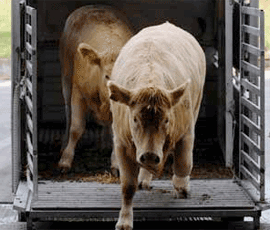Frustration grows at TB cattle restrictions

New cattle movement restrictions – and a revised TB surveillance testing regime determined on a county-by-county basis for herds in England – was badly communicated to livestock producers, NFU council was told.
NFU vice-president Adam Quinney said: “Rules need to credible – they also need to be explained well, which in this case they haven’t been. There is also extreme confusion out there about how the rules are applied.”
It was essential that people could carry on trading cattle safely, said Mr Quinney. Different categories of cattle carried a different risk when it came to spreading bovine TB, he added. Yet the new rules suggested that the government hadn’t fully appreciated this.
“We have to be able to trade,” said Mr Quinney. The NFU was continuing to lobby DEFRA on the issue, he added. “It is essential for farmers to be able to take grass keep. There are too many abandoned acres because the movement rules mean farmers simply cannot get grass keep.”
Rule changes include a reduction from 60 days to 30 days for movements of cattle from TB restricted herds from the day of their last tuberculin skin test with negative results. Moving cattle from TB restricted sales to other farms is now banned, unless they are approved finishing units.
DEFRA says the new rules are vital because of the continued spread of TB towards the north and east of England. In an effort to keep ahead of the “disease front”, the core annual testing area has also been extended to include areas at risk of TB.
